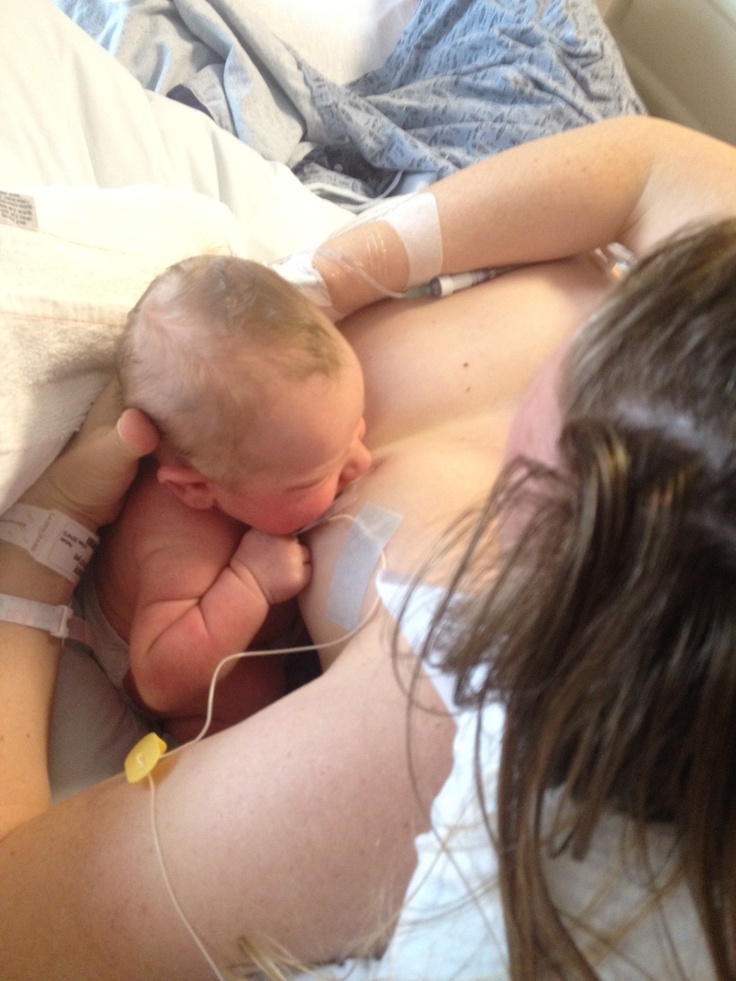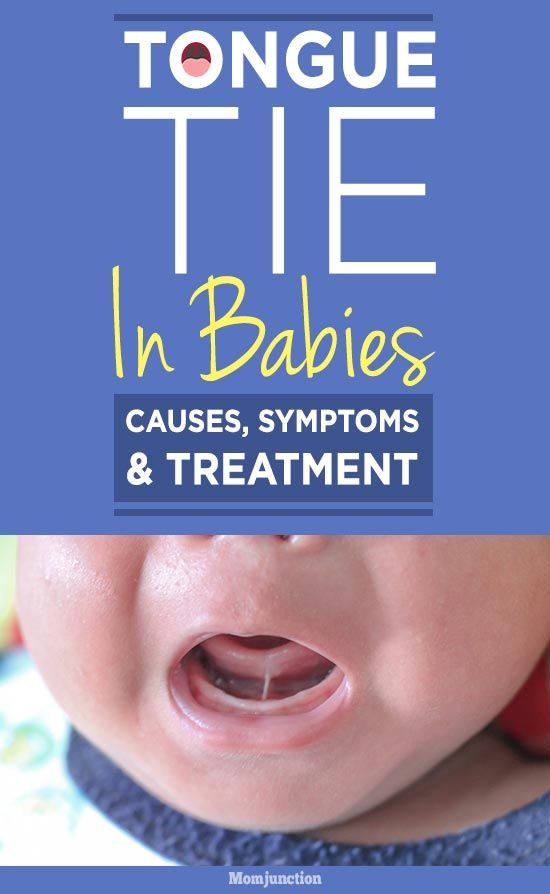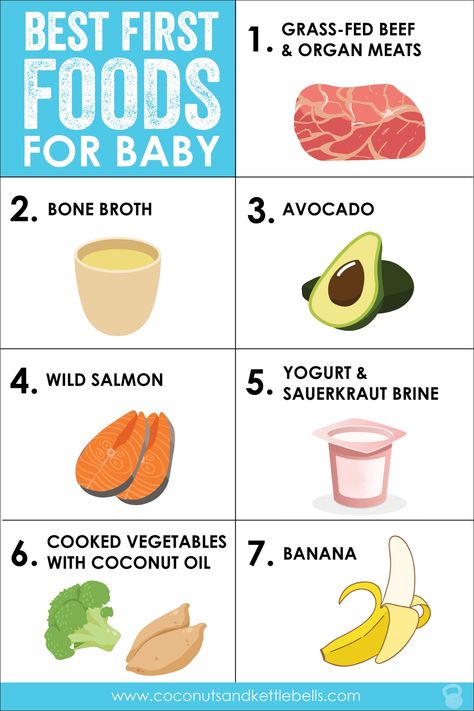Tongue tied baby feeding
Tongue-Tie | Breastfeeding Challenges | Start for Life
There may be times when breastfeeding is challenging. Never ignore any issues you may have – talk to your health visitor, midwife, GP or breastfeeding specialist as soon as possible, they will be able to help you sort it out quickly.
Here are some common breastfeeding issues, and tips on what to do.
- Colic
- Constipation
- Mastitis
- Milk supply
- Reflux
- Sore nipples
- Thrush
- Tongue-tie
Tongue-tie
Tongue-tie can make it harder for babies to breastfeed. It's when the strip of tissue, called the “frenulum” (attaching the tongue to the floor of the mouth) is shorter than normal. Tongue tie can prevent your baby from latching on properly – which can then lead to sore or cracked nipples.
Symptoms
Cases of tongue-tie can range from mild to severe. If severe, the tongue may be completely fused to the floor of the mouth. You may be able to see if your newborn or baby has tongue-tie by looking into their mouth when they're yawning or crying, although it's not always easy to spot.
Signs of tongue-tie in your baby might include:
- your baby's tongue does not lift or move from side-to-side
- their tongue may look heart-shaped when they stick it out
- difficulty breastfeeding or bottle feeding (and weight gain may be slow)
- frequent, long periods of feeding – but they seem unsettled and unsatisfied
- refusing to feed
- clicking noises when feeding
How does tongue-tie affect breastfeeding mums?
- Your milk supply may reduce, as your baby is not latching on and feeding well.
- You may have sore or cracked nipples, which can make breastfeeding painful.
- Poor latching on and ineffective feeding may lead to engorged breasts – which can then lead to mastitis.

Sometimes, babies with tongue-tie have no problems at all. They may still be able to latch on and feed well – so not every case of tongue-tie needs treatment.
If your baby does have tongue-tie, it will hopefully be picked up in the first routine check by your midwife. However, tongue-tie is not always easy to spot and may be discovered at a later stage (usually after feeding issues become apparent).
Breastfeeding Friend from Start for Life
The Breastfeeding Friend, a digital tool from Start for Life, has lots of useful information and expert advice to share with you – and because it's a digital tool, you can access it 24 / 7.
Treatment
If treatment is necessary, your baby will have a straightforward procedure called a “frenulotomy”. This is carried out by specially trained doctors, nurses or midwives – and is very quick (it takes a few seconds). Generally, no anaesthetic is used. The surgery simply involves snipping the short, tight piece of skin connecting the underside of the tongue to the floor of the mouth. As soon as it's done, you can feed your baby (which helps to heal any bleeding).
As soon as it's done, you can feed your baby (which helps to heal any bleeding).
More help
Read more about tongue-tie.
The Association of Tongue-tie Practitioners (ATP) has a directory of NHS tongue-tie practitioners.
Tongue and Lip Ties - La Leche League International
Image source: United States Breastfeeding Committee
Are you experiencing pain while breastfeeding, possibly combined with slow weight gain for your baby? While the vast majority of such breastfeeding problems can be resolved by adjusting positioning and attachment, and with good breastfeeding management, occasionally tongue tie might be the cause of the problem.
Tongue tie (ankyloglossia) is caused by a tight or short lingual frenulum (the membrane that anchors the tongue to the floor of the mouth). The frenulum normally thins and recedes before birth. Where this doesn’t happen, the frenulum may restrict tongue mobility. Tongue tie often runs in families and is thought to be more common in boys than girls. There is an association between high or unusual palates and tongue tie, because restricted tongue movement can affect the shape of the palate.
There is an association between high or unusual palates and tongue tie, because restricted tongue movement can affect the shape of the palate.
Breastfeeding challenges can also occur for other reasons. Identifying the cause is important when deciding on appropriate solutions, so seek help from someone skilled. Find local LLL support here.
Identifying tongue tie
When your baby tries to lift his tongue or move it forwards it may appear misshapen, short or heart-shaped, with the frenulum clearly pulling its centre down and restricting its movement. Or you may be able to see or feel firm tissue where his tongue meets the floor of his mouth. Degrees of tongue tie vary and it can be difficult to diagnose accurately. A short, tight, posterior tongue tie is rarer, but may be particularly hard to spot.
How breastfeeding may be affected
Tongue tie affects tongue movement to varying degrees. The shorter and tighter it is, the more likely it is to affect breastfeeding. Some babies with a tongue tie breastfeed well from the start, others do so when positioning and attachment are improved. But any tongue tie that restricts normal tongue movement can lead to breastfeeding difficulties. A baby needs to be able to move his tongue freely and extend it over the lower gum with his mouth open wide to be able to breastfeed well. The symptoms below are all associated with poor attachment that may be caused by tongue tie.
Some babies with a tongue tie breastfeed well from the start, others do so when positioning and attachment are improved. But any tongue tie that restricts normal tongue movement can lead to breastfeeding difficulties. A baby needs to be able to move his tongue freely and extend it over the lower gum with his mouth open wide to be able to breastfeed well. The symptoms below are all associated with poor attachment that may be caused by tongue tie.
A baby may:
• Be unable to latch on to the breast at all.
• Be unable to latch on deeply, causing nipple pain and damage.
• Have difficulties staying on the breast, making a clicking sound as he loses suction.
• Splutter and choke when coping with fast flowing milk.
• Breastfeed constantly to get enough milk.
• Have poor weight gain or need supplementation to maintain adequate weight gain.
• Develop jaundice that needs treating.
• Be fussy at the breast when the milk flow slows.
• Develop colic.
A mother may experience:
• Pain during feeds, with damaged nipples. Her nipple may be compressed or distorted into a wedge shape like that of a new lipstick immediately after feeding, often with a stripe at its tip.
• Engorgement, blocked ducts and mastitis because of ineffective milk removal.
• Low milk production because of ineffective milk removal.
• Oversupply if her baby compensates for not being able to breastfeed well by nursing very frequently.
• Tiredness, frustration and discouragement.
• A premature end to breastfeeding.
Breastfeeding is important for every baby
Though sometimes needed as a temporary supplement if your milk production is very low, introducing infant formula is not the answer. It has short-term and long-term health risks for both you and your baby. A baby with tongue tie can also have difficulties with bottle feeding. Milk may leak from his mouth during feeds and he may suffer from colic.
Treatment
Where a tongue tie is causing breastfeeding problems, treatment options are available and effective especially if the treatment is prompt. Although attention to positioning and attachment can help maintain breastfeeding and improve comfort to a certain extent, there is evidence that treating tongue tie by frenotomy (see below) is effective in resolving breastfeeding difficulties. Weight gain can improve dramatically. As well as the ongoing breastfeeding benefits, continuing to breastfeed after frenotomy maximises a baby’s chance of normal mouth (palate), speech and dental development. This includes tongue mobility for licking and moving particles of food around the mouth, helping prevent tooth decay.
Although attention to positioning and attachment can help maintain breastfeeding and improve comfort to a certain extent, there is evidence that treating tongue tie by frenotomy (see below) is effective in resolving breastfeeding difficulties. Weight gain can improve dramatically. As well as the ongoing breastfeeding benefits, continuing to breastfeed after frenotomy maximises a baby’s chance of normal mouth (palate), speech and dental development. This includes tongue mobility for licking and moving particles of food around the mouth, helping prevent tooth decay.
Keeping breastfeeding going
Mastering the art of breastfeeding can sometimes be a challenge and it takes determination to keep going if you are in pain. The information here can help you keep breastfeeding, both before and after treatment.
Soften your breast
A baby with tongue tie may find it easier to latch on if your breast is soft, so breastfeed frequently to avoid engorgement. When your baby bobs his head and licks the nipple, he naturally makes it easier to latch on. Or you can use reverse pressure softening to move fluids away from the nipple area so your baby can latch on well. Press all five fingertips of one hand around the base of the nipple. Apply gentle steady pressure for about a minute to leave a ring of small dimples on the areola. You can also press with the sides of your fingers. Place your thumb on one side of the nipple and two fingers on the other side where your baby’s lips will be. Gently hand express a little milk if needed.
Or you can use reverse pressure softening to move fluids away from the nipple area so your baby can latch on well. Press all five fingertips of one hand around the base of the nipple. Apply gentle steady pressure for about a minute to leave a ring of small dimples on the areola. You can also press with the sides of your fingers. Place your thumb on one side of the nipple and two fingers on the other side where your baby’s lips will be. Gently hand express a little milk if needed.
Biological nurturing™
A baby often instinctively attaches more deeply and comfortably if he can snuggle up close to his mother’s chest for periods of time. Try letting your baby lie on your body as you recline so both his chest and tummy are against you. This kind of ‘laid-back’ breastfeeding contact is known as Biological Nurturing™ and can be done skin-to-skin or with you and your baby lightly clothed—whatever is more comfortable and convenient for you both. Because gravity helps a baby keep his tongue forwards, this can make a real difference to how well your baby feeds and how much milk you make.
A deeper latch
Help your baby get as deep a latch as possible at the breast. This will maximise the amount of milk he gets and minimise nipple pain.
If your baby retracts (pulls back) his tongue when he opens his mouth, try sliding his chin a little further from the nipple so he can feel the ‘fatter’ part of the breast with his tongue. Denting the breast at the edge of the areola with a finger and placing your baby’s chin in the dent may also help.
You could also try placing your thumb or finger near the base of the nipple where your baby’s upper lip will be. If you press, your nipple will tilt away from your baby, presenting him with your breast rather than your nipple. As he opens wide, snuggle him in close and use your thumb or finger to tuck the breast into his mouth. Your nipple will be taken in last and unroll in his mouth. You can then slip your finger out. An LLL Leader can give you further suggestions to help you improve your baby’s positioning and attachment.
Encourage tongue mobility
To encourage your baby to move his tongue forward, you can also try:
• Reclining with your baby on top of you. Try leaning forward and back yourself to understand how gravity affects tongue position.
• Encouraging him to lick milk from his lips or from your nipple before and after feeds.
• Sticking your tongue out at your baby to encourage him to copy you.
Maintain milk production
If your baby is sleepy or has jaundice, or if you have engorgement or inverted nipples, a tongue tie can make things worse. If he is not able to take enough milk directly at the breast, then you will need to express it and give it to your baby until he is able to breastfeed effectively. Express by hand and/or with a pump at least 8 times a day if your baby is not draining the breast well. This will maintain your milk production and ensure he gets enough milk.
Small amounts of expressed milk can be offered by spoon, cup or syringe while you both learn how to breastfeed. Bottles or dummies can confuse your baby’s sucking technique, so consult an LLL Leader about breastfeeding friendly ways to bottle feed or about using a nursing supplementer. This device delivers extra milk through a tube along your breast as your baby nurses, avoiding the need for bottles.
Bottles or dummies can confuse your baby’s sucking technique, so consult an LLL Leader about breastfeeding friendly ways to bottle feed or about using a nursing supplementer. This device delivers extra milk through a tube along your breast as your baby nurses, avoiding the need for bottles.
An unusual palate
Restricted tongue movement caused by tongue tie may affect the shape of a baby’s palate, leading to a high palate or a bubble palate with a high spot. These may be a factor in broken suction, a clicking sound and pain during breastfeeding. A baby with an unusual palate may also resist a deeper latch due to gagging.
The following may help:
• Start with a clean finger with closely trimmed nail.
• Touch your baby’s lips and wait until he opens his mouth.
• Gently slide in your finger, pad side up along his hard palate, stopping just before the gag reflex is triggered.
Make this a pleasant game and, over a few days, gradually move your finger back to overcome sensitivity. After a tongue tie is divided, a baby’s increased tongue movement helps the palate shape become more normal.
After a tongue tie is divided, a baby’s increased tongue movement helps the palate shape become more normal.
Treating Tongue Tie
What can be done?
Frenotomy—dividing the tongue tie—can dramatically improve breastfeeding comfort and efficiency for both mother and baby. Dividing a tongue tie is a quick and simple procedure. No anaesthetic is needed for a baby under six months of age.
In some countries there are health professionals who have been specifically trained to divide tongue ties. For treatment you may need a referral from your midwife, doctor, pediatrician or other healthcare professional. Knowledge about tongue ties and how they affect breastfeeding varies, so it is worth persisting and seeking a second opinion. Private treatment may also be an option.
Is waiting an option?
Sometimes a very thin tongue tie breaks spontaneously or can be stretched by gentle massage of the frenulum. The earlier a tongue tie is divided, the easier it is to resolve any breastfeeding difficulties. Dividing a tongue tie in a baby over six months is also a more complicated procedure and usually requires a general anaesthetic.
Dividing a tongue tie in a baby over six months is also a more complicated procedure and usually requires a general anaesthetic.
Frenotomy—what will happen?
After the health professional’s initial assessment, your baby will be swaddled and held (often by an assistant) so he stays still during the procedure, which only takes a minute or two. The health professional lifts the tongue and divides the frenulum by cutting it with a pair of round-ended sterile scissors or by cauterising it.
Does it hurt?
No anaesthetic is needed for a very young baby as having a tongue tie divided only hurts a little, if at all. Some babies protest more at being swaddled than about the treatment. Others sleep right through the procedure! You will be asked to breastfeed your baby as soon as the procedure is over, to offer comfort, clean the wound and get his tongue moving as soon as possible. The inside of a baby’s mouth heals very quickly. The only treatment usually needed is to breastfeed to keep the wound clean and keep his tongue mobile. There may be a white patch under your baby’s tongue, but this heals within 24 to 48 hours.
There may be a white patch under your baby’s tongue, but this heals within 24 to 48 hours.
If things don’t resolve
Usually a mother notices an instant improvement in her comfort during breastfeeds. Sometimes it takes a week or two for a baby to adjust to his tongue’s greater mobility. An older baby may find it harder to adjust to increased tongue mobility and tongue exercises may be recommended. Occasionally a baby’s frenulum needs dividing a second time, usually because the division was not quite extensive enough the first time. If you suspect that the initial procedure has not resolved your baby’s breastfeeding problems, arrange another consultation. Do persist with finding solutions. If several factors are involved it can take time and expertise to resolve the problem. An LLL Leader can suggest further paths to explore and provide ongoing support.
Painful nipples
Using different feeding positions can help if breastfeeding is painful. Use the position you find most comfortable until your nipples heal. Check your baby’s attachment later in the feed—if he slips down your nipple, this may cause you pain. Reclining breastfeeding positions or extra support under your arms may help.
Check your baby’s attachment later in the feed—if he slips down your nipple, this may cause you pain. Reclining breastfeeding positions or extra support under your arms may help.
Ask your LLL Leader about breast compression, which can help your baby get extra milk more quickly. An increase in milk flow may also help him breastfeed more effectively.
Hand express to stimulate milk flow before feeding. Or start on the least painful side, switching sides once your milk lets down. Pain can reduce milk flow, leading to engorgement and mastitis. Ask your doctor, midwife or pediatrician about using a suitable painkiller. Applying warmth and using gentle massage and relaxation exercises just before feeds can help milk to flow.
Moist wound healing
When the underlying problem is corrected, moist wound healing can help your nipples heal without scab formation. After each feed gently pat your nipples dry to remove surface wetness. Apply a tiny smear of ultra pure modified lanolin to each nipple, dabbing it on rather than rubbing. Hydrogel pads without a cloth backing can also be used.
Hydrogel pads without a cloth backing can also be used.
Blood from cracked nipples
Blood from cracked nipples is not harmful to your baby. You can continue to breastfeed whilst working to improve positioning and attachment.
If healing is slow
Once your baby starts latching on well you should feel more comfortable and notice signs of healing within a few days. If not, visit your healthcare professional—sometimes a bacterial or fungal infection can prevent healing. Continued pain may be a sign that treatment (or further treatment) of your baby’s tongue tie is needed.
Seek support
This is a time when the support of other mothers in your local LLL group can be invaluable.
Find local support here.
This post was originally published on the LLLGB website, and is republished here with permission, with thanks to the LLLGB Publications Department.
Further Reading
Biological Nurturing™
The Womanly Art of Breastfeeding
References
Hazelbaker, AK. Tongue-Tie: Morphogenesis, Impact, Assessment and Treatment. Columbus, OH: Aidan and Eva Press, 2010.
Tongue-Tie: Morphogenesis, Impact, Assessment and Treatment. Columbus, OH: Aidan and Eva Press, 2010.
Mohrbacher, N. Breastfeeding Answers Made Simple. Amarillo Tx: Hale Publishing, 2010.
Watson Genna, C. Supporting Sucking Skills in Breastfeeding Infants. Burlington, MA. Jones & Bartlett, 2012.
Geddes, DT. et al. Frenulotomy for breastfeeding infants with ankyloglossia: Effect on milk removal and sucking mechanism as imaged by ultrasound. Pediatrics 2008; 12(1):e188–94.
Hogan, M. Westcott, C. and Griffiths, M. Randomized, controlled trial of division of tongue-tie in infants with feeding problems. J Paediatr Child Health 2005; 41:246–50.
Hong, P. et al. Defining ankyloglossia: A case series of anterior and posterior tongue ties. Int J Ped Otorhinolaryngology 2010; 74:1003–6.
Knox, I. Tongue tie and frenotomy in the breastfeeding newborn. Neoreviews 11 (9) Sept 2010.
Miranda, BH. and Milroy, CJ. A quick snip—a study of the impact of outpatient tongue tie release on neonatal growth and breastfeeding. JPRAS 2010; 63:e683–5.
JPRAS 2010; 63:e683–5.
NICE Guidelines
Watson Genna, C. And Coryllos, EV. Breastfeeding and tongue-tie. J Hum Lact 2009; 25(1):111–2.
Baeza, Carmela et al. Assessment and Classification of Tongue-Tie, Clinical Lactation, Volume 8, Number 3, 2017, pp. 93-98(6).
Genna, Catherine Watson et al. Treating Tongue-Tie, Clinical Lactation, Volume 8, Number 3, 2017, pp. 99-103(5).
Smillie,Christina et al. Post-Revision Instructions and Pain Relief, Clinical Lactation, Volume 8, Number 3, 2017, pp. 107-109(3).
Shaul Dollberg,1 Ronella Marom,1 and Eyal Botzer, Lingual Frenotomy for Breastfeeding Difficulties: A Prospective Follow-Up Study, Breastfeeding Medicine, Volume 9, Number 6, 2014. DOI: 10.1089/bfm.2014.0010.
Alona Bin-Nun et al. Dramatic Increase in Tongue Tie-Related Articles: A 67 Years Systematic Review, Breastfeeding Medicine. Sep 2017: 410-414.
Kendall-Tackett, Kathleen, The Tongue-Tie Controversy, Clinical Lactation, Volume 8, Number 3, 2017, pp. 87-88.
87-88.
Understanding tongue movement in infants
2 min.
Sept. 2021
This resource is for healthcare professionals
Researchers have used video recording for the first time to see differences in tongue movements between breastfed infants and adults when swallowing.
The tongue is an active muscle and a miracle of coordination. When we drink, the tongue prepares for swallowing by collecting liquid in the mouth, taking the shape of a bowl. It then quickly pushes the liquid back where it is swallowed, while still allowing us to continue breathing.
When we eat, the tongue works by holding the food in the mouth, moving it with saliva and turning it into a lump, which is then pushed back for swallowing. Both adults and infants use a peristaltic type of movement when swallowing.
Language training before birth
Teaching our tongue to do all this work begins in the womb. Before birth, the tongue begins to work by swallowing the amniotic fluid. After the birth of a child, the tongue plays a key role - it helps to squeeze milk out of the mother's breasts, working in conjunction with the jaws and lips.
Before birth, the tongue begins to work by swallowing the amniotic fluid. After the birth of a child, the tongue plays a key role - it helps to squeeze milk out of the mother's breasts, working in conjunction with the jaws and lips.
When the baby is suckled to the mother's breast, the nipple and areola are retracted into the mouth so that the nipple reaches the junction of the hard and soft palate. After the baby has sucked well, the tongue begins to work, rhythmically squeezing the nipple with peristaltic movements that squeeze the milk from the mammary gland into the back of the throat, where it is swallowed. Babies naturally coordinate sucking, swallowing, and breathing.
Bottle feeding
This process changes slightly when a baby is bottle fed. The stiffness of the artificial material does not allow the nipple to stretch and take the shape of the baby's mouth. Peristaltic movements of the tongue are difficult and milk can flow almost without effort on the part of the child.
Parents should remember that during breastfeeding, babies make an effort to get milk. When bottle-feeding, milk often flows very easily and babies can drink the same amount of milk much faster (compared to breastfeeding). This may seem like a good way to save time, but as with many other things in life, slower is often better. If you choose a bottle that works more like a breast, with a slower flow, it allows the baby to stop and pause, the baby enjoys comfortable feeding, and the corresponding satiety signals are developed more slowly.
Research task
Usually everything goes smoothly. But from time to time, babies have difficulty swallowing. This may be due to various problems and they are not always easy to learn and understand.
At the beginning of the atomic era, diagnostics were carried out with the help of X-ray cinematography (filming of X-ray images). For the first time in history, people could see the amazing internal processes in the mouth and observe how the tongue helps to swallow. When concerns arose about the effects of radiation on technicians and patients, the practice was discontinued. Currently, video recording using ultrasound and MRI is often used. However, even with the use of less invasive methods or technologies, scientists still have to find ways to study babies while breastfeeding that do not affect their actions.
When concerns arose about the effects of radiation on technicians and patients, the practice was discontinued. Currently, video recording using ultrasound and MRI is often used. However, even with the use of less invasive methods or technologies, scientists still have to find ways to study babies while breastfeeding that do not affect their actions.
Tongue Movement Study
The 2020 study "Quantifying Tongue Movement During Feeding in Infants and Swallowing in Adults" shows patterns. The scientists used ultrasound video to study tongue movements.
“We observed the most organized and rhythmic tongue movements in exclusively breastfed infants, less mobility in those who had conditions that interfere with normal feeding, such as tongue tie, and more “disorganized” movements with bottle feeding than breastfeeding,” the researchers report. “This highlights the key role of tongue movements in breast or bottle sucking.”
Disorganized movements with bottle feeding than with breastfeeding,” researchers report. “This highlights the key role of tongue movements in breast or bottle sucking.” They could also observe differences in tongue mobility before and after treatment in infants with tongue and lip frenulum. And for the first time, pictures of a baby with torticollis during breastfeeding and bottle feeding were obtained. The results showed "slightly less rhythmic sucking than usual during breastfeeding and irregular sucking during bottle feeding".
“This highlights the key role of tongue movements in breast or bottle sucking.” They could also observe differences in tongue mobility before and after treatment in infants with tongue and lip frenulum. And for the first time, pictures of a baby with torticollis during breastfeeding and bottle feeding were obtained. The results showed "slightly less rhythmic sucking than usual during breastfeeding and irregular sucking during bottle feeding".
Although this study was limited, the use of ultrasound video was effective in obtaining objective information about tongue movements. As more scientists use this technique, we'll get more information about how language works and we'll be able to get more accurate information about natural feeding and how to deal with it.
Share this article:
Similar articles
Are you not a healthcare professional?
References
Genna CW, Saperstein Y, Siegel SA, Laine AF, Elad D. Quantitative imaging of tongue kinematics during infant feeding and adult swallowing reveals highly conserved patterns. Physiol Rep. 2021;9:e14685. doi.org/10.14814/phy2.14685
Quantitative imaging of tongue kinematics during infant feeding and adult swallowing reveals highly conserved patterns. Physiol Rep. 2021;9:e14685. doi.org/10.14814/phy2.14685
You are leaving the Philips Healthcare (“Philips”) official website. Any links to third party websites that may be included on this site are provided solely as a convenience to you. Philips makes no warranties regarding any third party websites or the information they contain.
I understand
You are about to visit a Philips global content page
Continue
You are about to visit the Philips USA website.
I understand
Is it necessary to interfere with the child's work in order to cut the frenulum of the tongue?
The frenulum of the tongue is a thin and small membrane. which connects the tongue to the palate. Some babies are born with a membrane that is too short and dense, which prevents the tongue from doing its job properly. This dysfunction is called ankyloglossia, which means that the tongue is tied to the bottom of the mouth. A tongue frenulum can cause problems when breastfeeding, as it is difficult for the baby to nestle well against the breast.
This dysfunction is called ankyloglossia, which means that the tongue is tied to the bottom of the mouth. A tongue frenulum can cause problems when breastfeeding, as it is difficult for the baby to nestle well against the breast.
Although not all pediatricians are in favor of frenulum intervention, there is a high percentage of physicians who recommend intervention in the first months of a baby's life. So if you notice that your baby is having trouble breastfeeding, don't hesitate to let your pediatrician know. You can also observe with the naked eye when the baby cries, you can clearly see how the membrane binds the tongue.
The decision to intervene in a child's life will always be with the parents. In many cases, this problem resolves naturally after a few months, but this is not always the case. Therefore, you must know all the effects that the tongue tie can have on your child's future.
Index
- 1 Consequences of tongue frenulum or tongue frenulum
- 2 How is the frenulum cut?
- 3 Is an intervention necessary?
Effects of frenulum or tongue frenulum
- Feeding problems : A newborn with this dysfunction has difficulty suckling properly at the breast. Thus, it may be more difficult to establish satisfactory breastfeeding. Also, it could also be problem when starting complementary foods . The baby can make strange movements with his mouth, he will eat much longer and may even refuse to eat. You may even find it difficult to swallow.
- Speech problems Tongue frenulum prevents tongue from performing its function. One of these functions is speech. If the tongue does not move, it will be difficult for the baby to babble. It is even possible that 's frustration at not being able to make sounds causes the child to withdraw and refuse to speak.
 Significantly hinders proper development.
Significantly hinders proper development.
- Mispronunciation : You probably know someone who mispronounces certain phonemes, such as erre, ce, la de, or ele. This is due to the frenulum prevents the tongue from rising to the palate.
How is the bridle cut?
Tongue frenulum intervention is really quick and easy. This is a small operation that does not require hospitalization , no stitches. The surgeon makes a small incision with sterile scissors without anesthesia. Simply apply pressure with gauze pre-soaked in an antiseptic solution to keep it from bleeding. The saliva itself acts as a healing agent, and in a few minutes you will be able to breastfeed your baby properly.
Is an intervention necessary?
As I mentioned earlier, the decision should be made by the parents, always taking into account pediatric recommendations. It's normal that you feel sad to interfere in your child's affairs when he is still so small. But it is important that you appreciate the consequences that may arise in the short and medium term. With a small cut very quickly and almost painlessly, you can avoid the greater evil of .
But it is important that you appreciate the consequences that may arise in the short and medium term. With a small cut very quickly and almost painlessly, you can avoid the greater evil of .
Consider that a frenulum affects more than just your baby's feeding, perhaps with bottles and patience. But the problem in speech is much more difficult to solve. As your son or daughter gets older, surgery can be much more traumatic, even if it's a minor intervention. Instead, when they're babies, they don't need to be sad knowing what's going to happen . They won't have that moment in their memory, so it won't be traumatic.
Instead, going to school and interacting with other children when they have speech problems can cause problems with your child's self-esteem . Therefore, if you notice that your child's frenulum is too close to the tip of the tongue, discuss this with your pediatrician so that together you can make a better decision.










